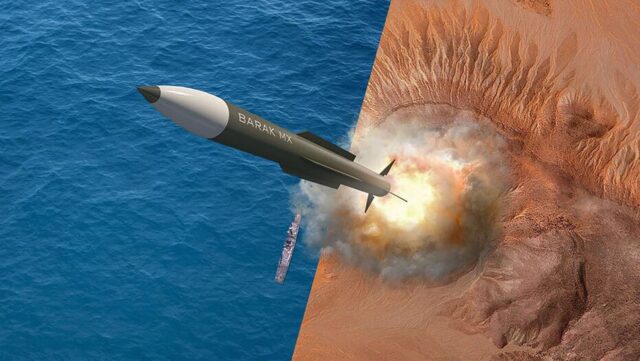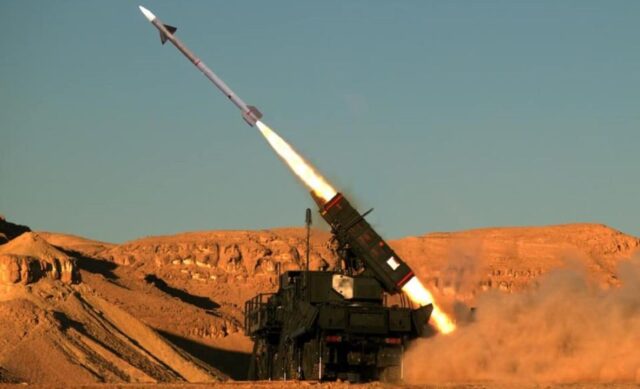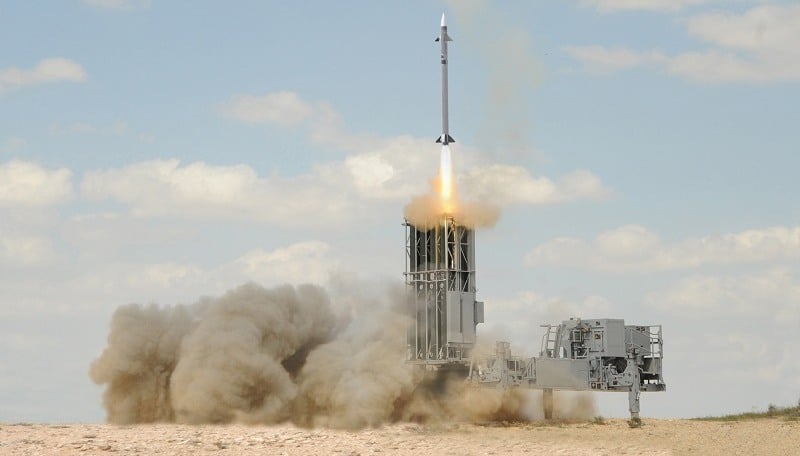Breaking Defense announced on October 19 that the first Barak anti-aircraft system has been deployed in the United Arab Emirates. However, little is really known about the whole matter. It should start with the fact that even the version of the system is unknown. It is not easy to decipher because Israel Aerospace Industries creates a whole family based on the original Barak-8 and comes in different versions: ship and land based.
The IAI did not facilitate the inquiry by refusing to comment on the matter, but Israeli defense industry sources cited by Breaking Defense expect a significant contract for more systems. We also do not know the value of the transaction or other details, including whether the system is operational and ready to intercept ballistic missiles launched by Ansar Allah fighters. Another thing is that we don’t know anything about the location of the first set or the protected area. You can guess that it is about the capital.
“This will be a very large contract as the Emirates need a large number of systems to protect a lot of infrastructure that has been attacked time and time again with missiles fired by Houthi rebels from Yemen,” one source said.
Already in January 2022, the first information appeared about behind-the-scenes talks between representatives of both countries regarding the conditions under which the UAE will receive Israeli anti-aircraft systems. At that time, both sides were reserved in any comments on the unofficial negotiations.

According to still unconfirmed information, in 2020 one Iskander missile fired towards Baku was knocked down on its way to the target by the Barak-8 anti-aircraft system.
(IAI)
They were probably launched on the initiative of the UAE after the January attack on Abu Dhabi with the use of Iranian circulating ammunition and ballistic missiles. Three civilians were killed as a result of the shelling. Two ballistic missiles were intercepted over Abu Dhabi. US Central Command said it used Patriot missiles to neutralize the threat to approximately 2,000 US military and civilians stationed at the Az-Zafra air base.
Network-centric Barak-MX
The latest version of the Barak system is the Barak-MX, which can simultaneously use three types of missiles: Barak MRAD short-range (up to 35 kilometers), Barak LRAD medium-range (up to 70 kilometers) and Barak ER long-range (up to 150 kilometers). They are designed to protect the airspace from the means of air attack of various types, day and night, in all weather conditions.
Initially, the MX was conceived as a ship homing system and was used on Indian aircraft carriers INS Vikramaditya and INS Vikrant, Kolkata-class and Visakhapatnam-class destroyers, Project 17A frigates and Kamorta-class corvettes. Later, a mobile version was developed for air defense of land forces. The missiles are fired from vertical launchers. The effectors are supported by the Barak-MX network-centric air defense system, supplemented by a system of sensors and a command and control system.
The barrack is not the only anti-aircraft system that the UAE has been striving for. According to the information provided at the end of September, Abu Dhabi also wanted to acquire the SPYDER system (Surface-to-air PYthon and DERby). However, this information should be approached with caution, as neither the Israeli and UAE foreign ministries nor the company Rafael ADS confirmed it. Probably, during the negotiations, there were also ideas about the purchase of other Israeli air defense systems.
Stopping Iran
The interests of both countries in this regard are convergent, and the existence of a common enemy makes Jerusalem intend to deepen cooperation with Arab states in the Middle East. It all started over two years ago with the so-called Abrahamic Agreements, which were revolutionary in themselves at the time. Following the political breakthrough, plans were made to strengthen military cooperation. Thus, an air defense alliance was formed. Defense Minister Beni Ganc believes that the regional venture against Iran and military ties with regional allies will be strengthened. One of the instruments will be Israel reselling its air defense systems.

SPYDER-SR is used by the armed forces of Singapore and Vietnam, and SPYDER-MR has been bought by India.
(Raphael)
The task of the air defense alliance will be to defend each other against Iranian unmanned aerial vehicles, ballistic and cruise missiles, and to deter Iran. In addition to the effectors, a common data exchange system is to be created, which is to lead to mutual warning of allies against drones taking off from Iran, areas controlled by pro-Iranian Shi’ite militias or areas under the authority of Hezbollah.
Returning for a moment to the purchase of the Barak-8 system, it should be noted that the Israeli solution is an “off the shelf” option, which is of great importance for the rapid strengthening of airspace protection over the UAE. However, the Emirates think long-term and already on December 16, 2021 in Dubai, during the Expo 2021 exhibition, the President of the Republic of Korea Mun Jae-in and the Vice-President and Prime Minister of the United Arab Emirates Sheikh Muhammad ibn Rashid Al-Maktum signed an agreement on the sale of the South Korean air defense system to the Arabian Peninsula mid-range M-SAM 2 (also known as Cheongung Block II).
However, no details were given on the system configuration, the number of batteries ordered or the delivery schedule. Entities from both countries were involved in the execution of the order, including Hanwha Systems, Hanwha Defense, UAE TTI and LIG Nex1. We know, however, that Seoul will not deliver the sets before 2024, which undoubtedly forced further searches and the Israeli system available immediately.
Jerusalem will not resist delivering anti-aircraft systems to countries in the region that recognize the Islamic Republic of Iran as their enemy. This is not a good-natured attitude of the state that takes into account the fate of others, but a typical realism in international relations. Israel takes a completely opposite position on the supply of defensive systems to Ukraine. Afraid of losing a good operational position in Syria, it prefers not to irritate the Russians.
See also: Morana – Czech goddess presented at Eurosatory 2022
press materials from Israel Aerospace Industries

